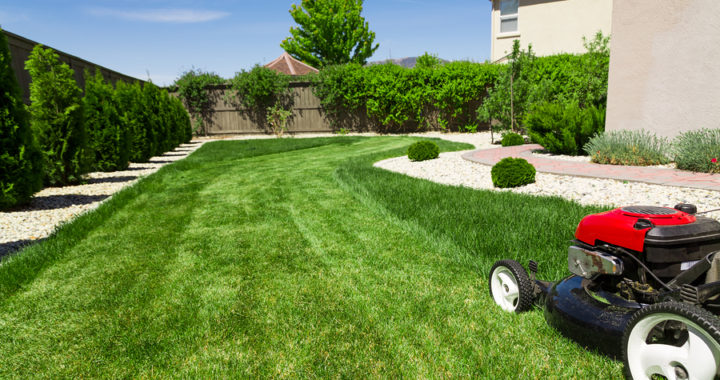Tips for the Perfect Summer Lawn
If a lush, green, gorgeous lawn is your idea of summer perfection, check out these tips. We’ll share with you the right strategies for feeding, mowing, watering, weed control, and re-seeding.
Your first step is becoming a scrupulous observer of your lawn, and any changes or problems you see developing. Once a problem is obvious, it’s a lot harder to reverse, so keeping an eye out for subtle changes will make a big difference in your campaign for the prettiest lawn on the block.
Also, keep in mind that the scorching days of summer are hard on a lawn, and when a lawn–or any plant–is under stress, it’s much more susceptible to disease, weeds and insects. Start early in the season to cultivate a vigorous, thick lawn before the heat of the summer hits, and do your best to nip problems in the bud–they’ll be much easier to deal with. If you’re not sure what you’re up against, take a 2×2-inch plug of grass and soil to a local nursery or the cooperative extension service for advice.
Some of the advice below is specific to warm-climate grass (Bermuda, St. Augustine) or cool-climate grasses (Kentucky bluegrass, fescue, perennial ryegrass).
FEEDING:
Aerate and fertilize the lawn in spring, before the grass really takes off later in May and June. Give warm-climate grass nitrogen supplementation on a monthly basis throughout the growing season, but don’t fertilize cool-climate grasses again until fall.
MOWING:
A sharp blade cuts grass cleanly instead of shredding it, reducing susceptibility to disease. Sharpen your blade in the winter so you’re ready for spring. Try to cut off only one-third of the grass blade when you mow, and raise the mower height gradually by 25 to 50 percent as temperatures rise. A cool-climate lawn shouldn’t be cut lower than 2 to 2-1/2 inches; warm-season lawns should be cut to 3/4 to 1-1/2 inches tall when temperatures are above 80 degrees.
Grasses benefit from growing a little taller during the summer months. The extra shade keeps the root zone cool, minimizing evaporation. Come fall, cut the lawn a bit shorter, to help the soil dry out more quickly next spring. However, don’t cut the grass shorter than the recommended range.
Gardeners in the north can apply fertilizer any time in the fall. Fall is also a good time to aerate the soil, so water and air can more easily permeate the ground.
WATERING:
Water uniformly, infrequently and deeply in the early morning. Ideally, your lawn should get a total of one inch of water weekly. Check the distribution of your sprinkling system by setting out short cans (tuna or cat food sized). See how evenly they fill and how long it takes, and adjust your system with a goal of one inch per week. Another easy test: poke a screwdriver through the grass into the dirt. If it’s hard to push in, water more.
Cool season grasses will go dormant and turn brown in midsummer if you live in a hot, dry climate. Except in prolonged drought conditions, the lawn will restore itself to green glory once the weather cools and rain returns. If you’re content to let it go brown for the summer, stop watering entirely. Grass does best if it’s allowed to go dormant for the whole season, instead of yo-yoing in and out of dormancy by occasional watering.
WEEDING:
Herbicides should not be applied in the summer, when the lawn is heat stressed. If you noticed a weed problem last year, get your herbicide sprayed in late April or May. Early to mid-fall is also a good time to apply herbicides, because this is the time of year weeds are storing nutrients for the winter, so they readily take up chemicals. For a less toxic option, choose soap herbicides.
At any time of year, you can remove weeds by hand.
OTHER PROBLEMS:
Are you seeing irregular brown patches? If chunks of lawn come up easily, you’ve got grubs — larval beetles eating the grass roots. Examine the soil for white larvae. Deal with larvae by spiking the soil 2 inches deep in early fall. Otherwise, apply a grub insecticide.
If moss is taking over, rake it out as soon as you can or apply moss-killer. Shaded, acidic, compacted soil with poor drainage is an invitation to moss, so try to reverse those conditions to discourage moss.
RESEEDING/RESODDING:
If your lawn has bare patches due to any of these problems, you can restore it with sod, seed, sprigs or plugs. Sod can be laid at any time in the growing season. Seed can be applied any time, but it’ll take more attention and maintenance in the heat of the summer and will struggle to thrive. Seeds and plugs are best applied in spring with warm-season grass varieties.
